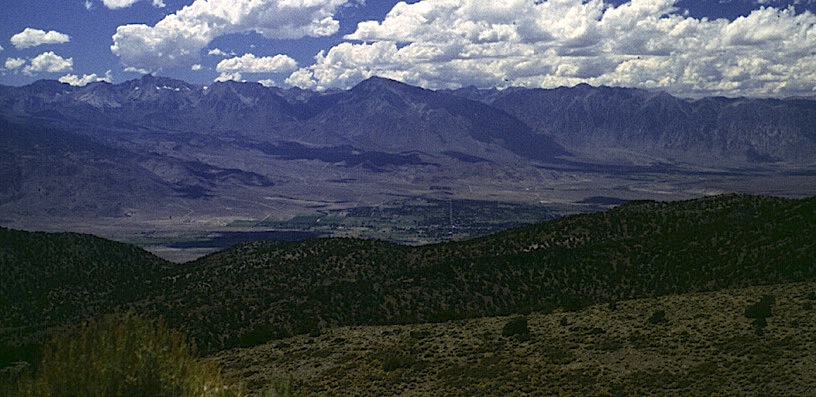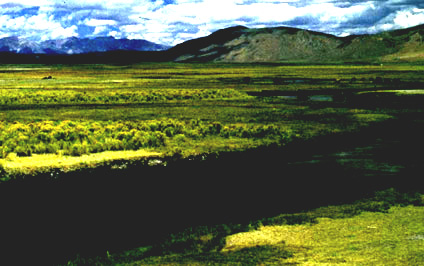

The Owens River, south of Bishop.
| Bishop, Owens Valley, beneath the Sierra Nevada Mountains, California | |
 |
Bishop is the patch of green-space in the heart of a high-altitude desert valley. This is the Owens Valley, tapped in the early 1900s for water from a thirsty city on the make, called Los Angeles. Most of the Owens Valley is owned, literally in fee simple absolute, by the City of Los Angeles Metropolitan Department of Water and Power (DWP); a public agency. |
| The Owens Valley was thus the site of a serious, prolonged struggle for water rights that was not resolved without violence, especially after the City of Los Angeles built a the Owens Valley Aqueduct to tap the Eastern side of the Sierra Nevada Mountains, 235 miles north of growing Los Angeles. Opened on November 15, 1913, the water from north of Bishop flowed south by gravity and then had to be pumped over two mountain ranges before it reached the San Fernando Valley, just northwest of downtown Los Angeles. The Owens Valley Aqueduct's visionary engineer and builder, William Mulholland is reputed to have said, on the day the water flowed into Los Angeles, "There it is . . . Take it!." |
The Owens River, south of Bishop. |
See The Great Thirst, Norris Hundley, Jr., pp.144-156.
The geological formation of the terrain surrounding Bishop, pictured above, is that of a graben or valley that sunk downward between [Horst and Graben formations] two uplifted mountain ranges due to tectonic plate activity in eastern California. The photograph is taken from the east looking west to the Sierra Nevada Mountains from the White Mountains.
globe | Arid Regions | Water Cases | California home
